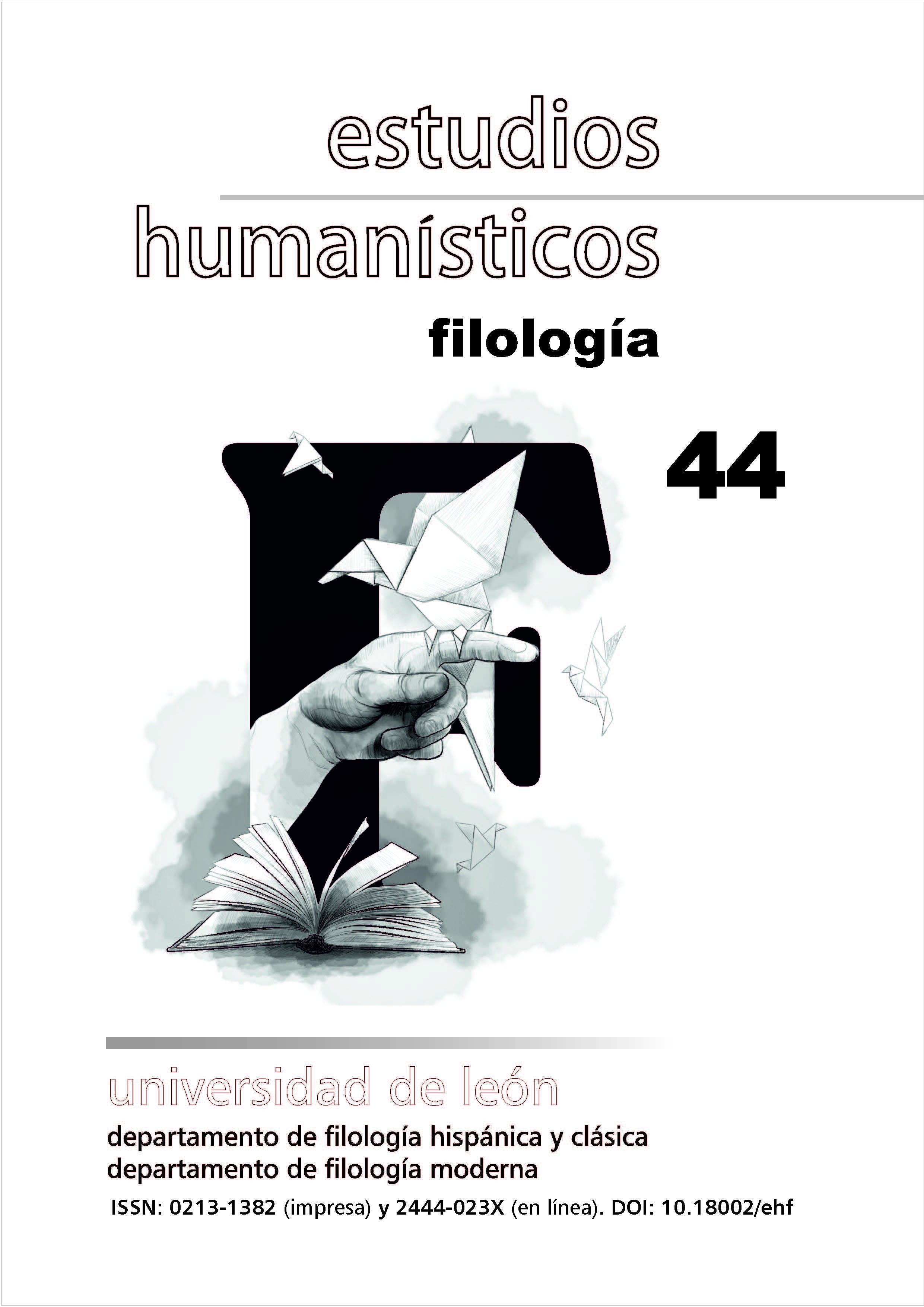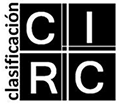A contrastive-competential approach to the teaching of second languages
DOI:
https://doi.org/10.18002/ehf.i1.7365Keywords:
competence, scaffolding, learning second language, learning, contrastiveAbstract
In this work, we put forward a contrastive approach to the teaching of second languages (L2) which goes from the competences in the mother tongue (L1) to the linguistic strategies used to achieve such competences in the L2. We outline a methodology made up of four phases, which starts from the knowledge that the students have of their L1. We propose to use this knowledge as scaffolding in the process of teaching the strategies in the L2. Finally, we show how this methodology can be used to teach the intonation of thetic predicates and the use of the periphrastic passive in English as L2.Downloads
Métricas alternativas
References
Bosque, I. y Gallego, A. J. (2016): “La aplicación de la gramática en el aula. Recursos didácticos clásicos y modernos para la enseñanza de la gramática”, Revista de Lingüística Teórica y Aplicada (RLA), 54(2), 63-83.
Canale, M. (1983): From Communicative Competence to Communicative Language Pedagogy, Language and Communication, London, Longman.
Chomsky, N. (1957): Syntactic Structures, The Hague, Mouton.
Chomsky, N. (1965): Aspects of the Theory of Syntax, Cambridge, MIT Press.
Chomsky, N. (1981): Lectures on Government and Binding, Dordrecht, Foris.
Chomsky, N. (2005): “Three Factors in Language Design”, Linguistic Inquiry, 36(1), 1-22.
Corder, S. P. (1967): “The significance of learners’ errors”, IRAL, 5, 161-70.
Corder, S. P. (1981): Error Analysis and Interlanguage, Oxford, Oxford University Press.
Cruttenden, A. y Gimson, A. C. (1994): Gimson’s Pronunciation of English, London, Edward Arnold.
El-Madkouri Maataoui, M. (2006): “Escuelas y técnicas de traducción en la Edad Media”, Tonos Digital - Revista Electrónica de Estudios Filológicos, 11.
Estebas-Vilaplana, E. (2009): Teach Yourself English Pronunciation, Madrid, Editorial UNED.
Finch, F. D. y Ortiz-Lira, H. (1982): A Course in English Phonetics for Spanish Speakers, London, Heinemann Educational Books.
Fries, C. C. (1945): Teaching and Learning English as a Second Language, Ann Arbor MI, University of Michigan Press.
Garrudo Carabias, F. (1996): “Los nuevos caminos del análisis contrastivo”, en Martínez Vázquez, M. (ed.) (1996) Gramática Contrastiva Inglés-Español, Huelva, Universidad de Huelva: 3-13.
Greenberg, J. (1963): “Some Universals of Grammar with Particular Reference to the Order of Meaningful Elements”, en Greenberg, J. (ed.) (1963) Universals of Language, London, MIT Press: 73-113.
Gundel, J. K. y Fretheim, T. (2006): “Topic and Focus”, en Horn, L. R. y Ward, G. (eds.) (2006) The Handbook of Pragmatics, Oxford, Blackwell: 175-96.
Hualde, J. I. (2005): The Sounds of Spanish, Cambridge, Cambridge University Press.
Hymes, D. H. (1972): “On Communicative Competence”, en Pride, J. B. y Holmes, J. (eds.) (1972) Sociolinguistics, Baltimore, Penguin Education: 269-93.
James, C. (1980): Contrastive Analysis, London, Longman.
Jiménez-Fernández, A. L. (2020): “Information-structure strategies in English/Spanish translation”, Journal of English Studies, 18, 83-107.
Kelsey, M. R. y Laurice, M. J. (2019): “Effects of word boxes on improving students’ basic literacy skills: A literature review”, Preventing School Failure: Alternative Education for Children and Youth, 63(1), 42-52.
Kufner, H. L. (1962): The Grammatical Structures of English and German: A Contrastive Sketch, Chicago, University of Chicago Press.
Lado, R. P. (1957): Linguistics across Cultures: Applied Linguistics for Language Teachers, Ann Arbor MI, University of Michigan Press.
Larrañaga Domínguez, A. (2002): “Aproximación a una bibliografía sobre lingüística contrastiva”, Carabela, 52, 123-36.
Littlewood, W. (1988): Communicative Language Teaching: An Introduction, Cambridge, Cambridge University Press.
Lozano, C. y Mendikoetxea, A. (2010): “Interface conditions on postverbal subjects: A corpus study of L2 English”, Bilingualism: Language and Cognition, 13(4), 475-97.
Mair, C. (2018): “Contrastive Analysis in Linguistics”, en Aranoff, M. (ed.) (2018) Oxford Bibliographies Online, Oxford University Press.
Mott, B. (2005): English Phonetics and Phonology for Spanish Speakers, Barcelona, Publicacions i Edicions de la Universitat de Barcelona.
Moulton, W. G. (1962): The Sounds of English and German, Chicago, University of Chicago Pres.
O’Connor, J. D. (1967): Better English Pronunciation, Cambridge, Cambridge University Press.
Ojea, A. (2020): “The Syntax of Thetic Statements in English”, Atlantis. Journal of the Spanish Association for Anglo-American Studies, 42(1), 143-62.
Selinker, L. (1972): “Interlanguage”, IRAL, 10(2), 209-31.
Stockwell, R. P. y Bowen, D. (1965): The Sounds of English and Spanish, Chicago, University of Chicago Press.
Stockwell, R. P., Bowen, D., y Martin, J. W. (1965): The Grammatical Structures of English and Spanish, Chicago, The University of Chicago Press.
Trubetzkoy, N. S. (1939): Griindzuge der Phonologie, Praga, Travaux du Cercle Linguistique de Prague.
Vigotsky, L. S. (1978): Mind in Society: The Development of Higher Psychological Processes, Cambridge, MA, Harvard University Press.
Ward, G. y Birner, B. (2006): “Information Structure and Non-canonical Syntax”, en Horn, L. R. y Ward, G. (eds.) (2006) The Handbook of Pragmatics, Oxford, Blackwell: 153-74.
Weinreich, U. (1953): Languages in Contact: Findings and Problems, New York, Linguistic Circle of New York.
Wells, J. (2007): English Intonation, Cambridge, Cambridge University Press.
Zubizarreta, M. L. (1998): Focus, Prosody, and Word Order, Cambridge, MA, MIT Press.
Zubizarreta, M. L. y Nava, E. (2011): “Encoding discourse-based meaning: Prosody vs. syntax. Implications for second language acquisition”, Lingua, 121(4), 652-69.
Downloads
Published
How to Cite
Issue
Section
License
Copyright (c) 2022 Ismael I. Teomiro , Eva Estebas-Vilaplana

This work is licensed under a Creative Commons Attribution-NonCommercial-ShareAlike 4.0 International License.
Los autores o autoras que publican en esta revista están de acuerdo con los siguientes términos:
- Los autores o autoras conservan los derechos de autoría de su trabajo y ceden de forma no exclusiva los derechos de explotación (reproducción, distribución, comunicación pública, transformación) a la Universidad de León, por lo que pueden establecer, por separado, acuerdos adicionales para la distribución no exclusiva de la versión de la obra publicada en la revista (por ejemplo, alojarlo en un repositorio institucional o publicarlo en un libro), con un reconocimiento de su publicación inicial en esta revista.
- Este trabajo se encuentra bajo la Creative Commons Attribution-NonCommercial-ShareAlike 4.0 International License. Puede consultarse desde aquí la versión informativa y el texto legal de la licencia.
- Se permite y se anima a los autores y autoras a difundir electrónicamente las versiones pre-print (versión antes de ser evaluada) y/o post-print (versión evaluada y aceptada para su publicación) de sus obras antes de su publicación, ya que favorece su circulación y difusión más temprana y con ello un posible aumento en su citación y alcance entre la comunidad académica.











